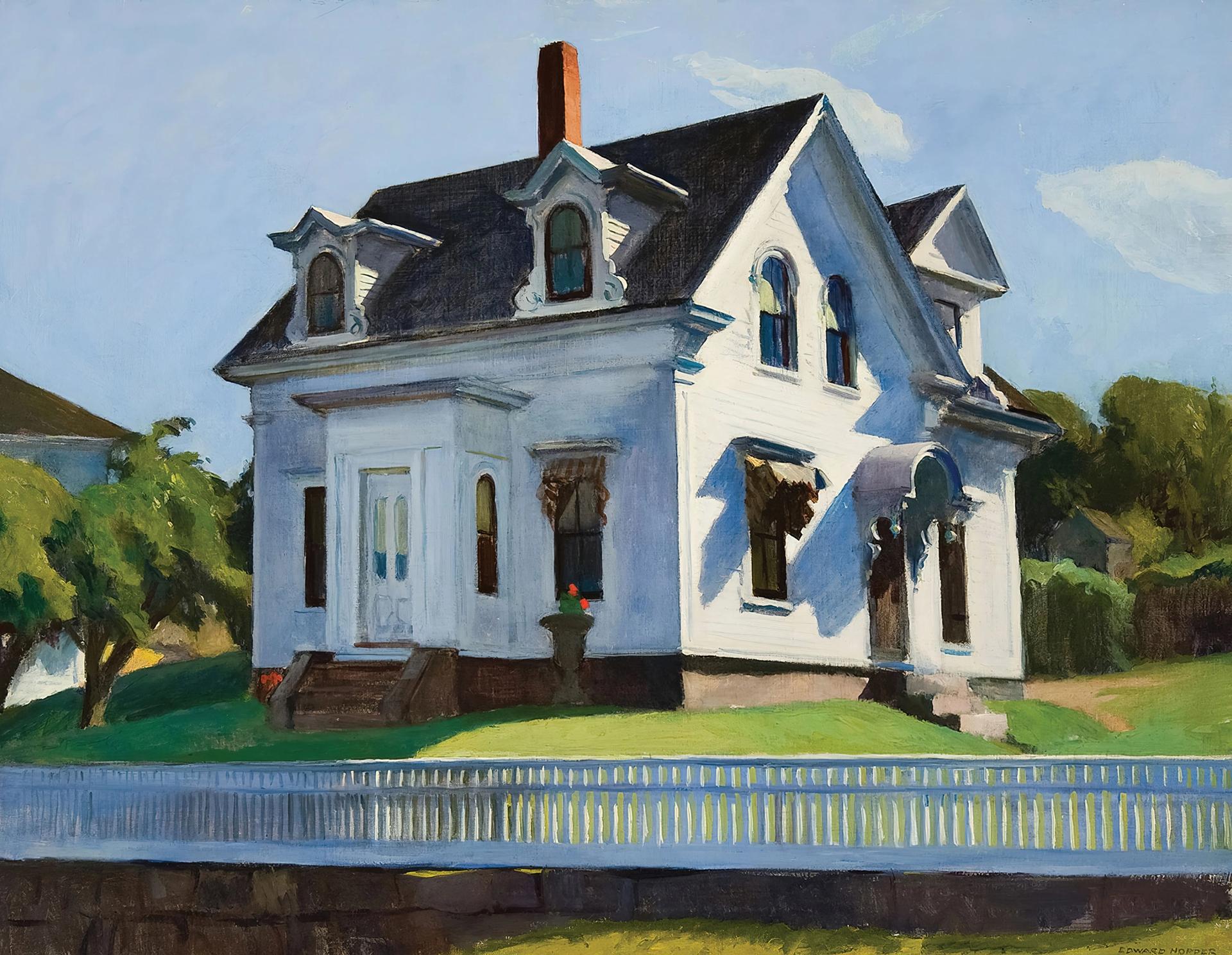It may surprise some that it took Edward Hopper (1882-1967) over 40 years to sell more than one painting. During the early 1900s, he experienced constant frustration and uncertainty, wandering between Europe, New York and New England in an effort to cultivate a distinct voice. Driven by a staunch individualist ethos, Hopper refused any affiliation with existing art movements and became something of an aberration, languishing in obscurity and surviving on commercial illustration while his former school colleagues art were getting the sales and recognition it was waiting for. Then, in the summer of 1923, he headed to the coastal village of Gloucester, Massachusetts – a popular haven for artists – and everything changed.
This turning point is the subject of a new exhibition, Edward Hopper and Cape Ann: Lighting an American Landscape. Curated by Elliot Bostwick Davis and presented in collaboration with the Whitney Museum of American Art, it brings together more than 60 paintings, prints and drawings to examine how, over five summers, Cape Ann provided Hopper with the visual, cultural and personal to straighten up. his artistic fortune and define his mature style. Included are seven works by Hopper’s wife, Josephine (Jo) Nivison Hopper, who was an artist in her own right. Jo’s influence and contribution are at the center of the exhibition, since it was in Gloucester in the summer of 1923 that Edward and Jo – who had met while students of Robert Henri at the New York School of Art – began the courtship that would lead to their marriage and lifelong creative partnership.

Church towers, Gloucester (1923) by Josephine (Jo) Nivison Hopper © Whitney Museum of American Art / Licensed by Scala / Art Resource, NY © 2023 Heirs of Josephine N. Hopper / Licensed by ARS, NY
Davis explains how the exhibition and its accompanying catalog “represent the first extended focus on the artist’s five summers in Gloucester, combining visual evidence and a re-examination of published sources…to recast the role of her fellow painter and future wife Josephine Verstille Nivison as Edward Hopper’s creative teacher, partner and producer.
Through several pairings, the show explores Edward and Jo’s habit of painting side-by-side, as well as the potential impact Jo’s painting might have had on Hopper. Drawing on Hopper biographer Gail Levin’s seminal research on Jo Hopper, the exhibition highlights Jo’s defining impact on Hopper’s trajectory, including her adoption of watercolor at her suggestion and lobbying for its inclusion in an exhibition at the Brooklyn Museum, where the sale of his 1923 watercolor The mansard roof served as the catalyst for his rise to fame.

by Hopper Hodgkin’s house (1928) © 2023 Heirs of Josephine N. Hopper / Licensed to ARS, NY
Throughout, Davis makes the case for Cape Ann as the essential formative environment of Hopper’s career, saying that in the five trips Hopper made there between 1912 and 1928, he overcame obvious awkwardness in his earlier work. , drawing inspiration from the vernacular architecture and landscapes of Gloucester to develop a distinctly American iconography grounded in the poignant convergence of light and form.
• Edward Hopper and Cape Ann: Lighting an American LandscapeCape Ann Museum, Gloucester, 22 July-16 October
